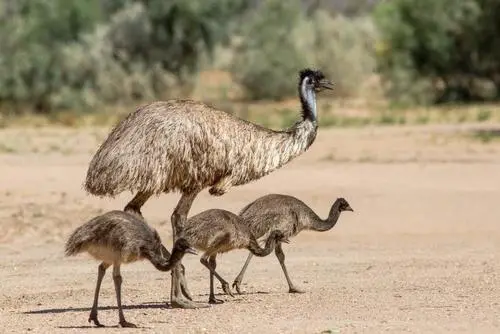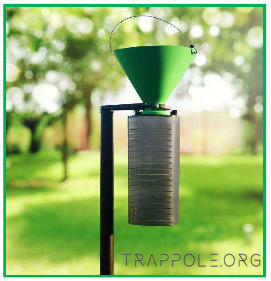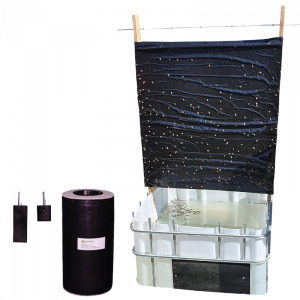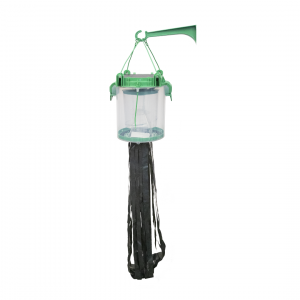Birds are known for their ability to fly, but there are actually a number of species that prefer to walk instead. These birds have evolved a variety of adaptations that help them get around on the ground, including strong legs, powerful feet, and short wings.
Birds that are adapted to living primarily on the ground rather than flying are referred to as ground-dwelling birds or flightless birds. These species have undergone evolutionary changes that favor terrestrial locomotion, and as a result, their wings are often underdeveloped for flight.
Ground-dwelling birds exhibit a variety of adaptations that enable them to walk or run efficiently on the ground. Their wings might be used for balancing, displays of courtship, or limited flapping during short flights.
Here are 10 birds that prefer to walk rather than fly:
In a stunning display of nature's adaptability, the Ostrich dashes across African savannas, while the Emu strides through Australian outbacks, and the Rhea roams South American plains. In the dense forests of New Zealand, the Kiwi and Kakapo navigate the underbrush, whereas the formidable Cassowary asserts its presence in Australasian rainforests. The swift Roadrunner zips through the deserts of North America, the majestic Secretary Bird stalks prey in African grasslands, the unique Hoatzin clambers in South American jungles, and the resilient Sandgrouse endures arid desert environments. These are the incredible Birds That Prefer Walking Over Flying, each a testament to evolutionary ingenuity.
| Bird | Region | Special Features |
|---|---|---|
| Ostrich | Worldwide | 🌍 Largest bird, runs up to 45 mph, digs for food |
| Emu | Worldwide | 🏃♂️ Second-largest bird, runs up to 30 mph |
| Rhea | South America | 🦶 Long legs, runs up to 40 mph, strong feet |
| Kiwi | New Zealand | 🌳 Slender legs, adept at walking in forests |
| Kakapo | New Zealand | 🦜 Flightless parrot, walks in forests, strong beak |
| Cassowary | New Guinea, Australia | 🔪 Sharp claws, runs up to 30 mph |
| Roadrunner | SW USA, Mexico | 🏜️ Runs up to 20 mph, sharp claws for hunting |
| Secretary Bird | Africa | 🏃♀️ Runs up to 35 mph, catches prey with claws |
| Hoatzin | South America | 🌲 Walks in forests, climbs trees with sharp claws |
| Sandgrouse | Deserts | 🏜️ Ground dwelling, adapted to desert life |
- The ostrich is the largest bird in the world, and it is also one of the most well-known flightless birds. Ostriches have long, powerful legs that they use to run at speeds of up to 45 miles per hour. They also have strong feet that help them to dig for food.
- The emu is the second-largest bird in the world, and it is also flightless. Emus have long, powerful legs that they use to run at speeds of up to 30 miles per hour. They also have strong feet that help them to dig for food.
- The rhea is a flightless bird that is found in South America. Rheas have long, powerful legs that they use to run at speeds of up to 40 miles per hour. They also have strong feet that help them to dig for food.
- The kiwi is a flightless bird that is found in New Zealand. Kiwis have long, slender legs that they use to walk through dense forests. They also have strong feet that help them to dig for food.
- The kakapo is a flightless parrot that is found in New Zealand. Kakapos have large, powerful feet that they use to walk through the forest. They also have strong beaks that help them to eat fruit and nuts.
- The cassowary is a flightless bird that is found in New Guinea and Australia. Cassowaries have long, powerful legs that they use to run at speeds of up to 30 miles per hour. They also have sharp claws that can be used for defense.
- The roadrunner is a ground-dwelling bird that is found in the southwestern United States and Mexico. Roadrunners have long, powerful legs that they use to run at speeds of up to 20 miles per hour. They also have sharp claws that help them to catch prey.
- The secretary bird is a large, ground-dwelling bird that is found in Africa. Secretary birds have long, powerful legs that they use to run at speeds of up to 35 miles per hour. They also have sharp claws that help them to catch prey.
- The hoatzin is a strange, flightless bird that is found in South America. Hoatzins have long, powerful legs that they use to walk through the forest. They also have sharp claws that help them to climb trees.
These are just a few of the many birds that prefer to walk rather than fly. These birds have evolved a variety of adaptations that help them to get around on the ground, and they are an important part of the ecosystems in which they live.
What are birds that walk instead of fly?
Birds that walk instead of fly are known as ground-dwelling birds or flightless birds. They have evolved to spend most of their time on the ground, and their wings are typically small and weak. Some ground-dwelling birds can fly, but they do so only for short distances, and they are not as agile in the air as flying birds.
There are many different types of ground-dwelling birds, and they can be found in a variety of habitats around the world. Some of the most common types of ground-dwelling birds include:
- Ostriches
- Emus
- Kiwis
- Rheas
- Casuaris
- Penguins
- Tinamous
- Guineafowl
- Bustards
Ground-dwelling birds have a number of adaptations that help them to survive on the ground. These adaptations include:
- Strong legs and feet for walking and running
- Long necks for reaching food
- Keen eyesight for spotting predators
- Dense feathers for insulation
- A lack of predators
Ground-dwelling birds play an important role in the ecosystem. They help to disperse seeds, pollinate plants, and provide food for other animals. They are also a source of cultural and economic value for many people around the world.
Types of birds that walk instead of fly

There are many different types of birds that walk instead of fly, each with its own unique adaptations. Some of the most common types of walking birds include:
- Ostriches
- Emus
- Kiwis
- Cassowary
- Rhea
- Secretary bird
- Stilts
- Sandpipers
- Plovers
These birds have all evolved to walk instead of fly for a variety of reasons. Some, such as ostriches and emus, are simply too large to fly. Others, such as kiwis and cassowaries, have evolved to live in dense forests where flying would be difficult. And still others, such as stilts and sandpipers, have evolved long legs that allow them to walk quickly through water or mud.
IV. Benefits of birds that walk instead of fly
There are a number of benefits to being a bird that walks instead of flies. These include:
- **Less energy expenditure:** Walking requires less energy than flying, which can be a major advantage for birds that live in areas with limited food resources.
- **Greater maneuverability:** Birds that walk can more easily navigate through dense vegetation and other obstacles than birds that fly. This can give them an advantage in finding food and avoiding predators.
- **Greater safety:** Birds that walk are less likely to be preyed upon by aerial predators than birds that fly. This is because they are closer to the ground and can more easily hide from predators.
Of course, there are also some drawbacks to being a bird that walks instead of flies. These include:
- **Reduced speed:** Birds that walk are slower than birds that fly, which can make it difficult for them to escape from predators or catch prey.
- **Limited range:** Birds that walk are less likely to be able to travel long distances than birds that fly. This can limit their ability to find food and mates.
- **Greater exposure to predators:** Birds that walk are more exposed to predators than birds that fly. This is because they are closer to the ground and cannot easily take flight to escape.
Overall, the benefits of being a bird that walks instead of fly outweigh the drawbacks. This is why there are so many species of birds that have evolved to walk instead of fly.
V. Drawbacks of birds that walk instead of fly
There are a few drawbacks to being a bird that walks instead of flies.
- Birds that walk are more vulnerable to predators than birds that fly. This is because they cannot escape from predators as quickly as flying birds.
- Birds that walk have to spend more energy on locomotion than birds that fly. This is because walking is a more energy-intensive activity than flying.
- Birds that walk have a smaller range than birds that fly. This is because they cannot travel as far as flying birds.
Overall, birds that walk instead of fly have some disadvantages compared to birds that fly. However, these birds have also evolved a number of adaptations that help them to survive and thrive in their environment.
VI. Examples of birds that walk instead of fly
Here are some examples of birds that walk instead of fly:
- Emus
- Kiwis
- Ostrich
- Rea (bird)
- Tinamous
These birds have all evolved to walk instead of fly for a variety of reasons. Some, such as emus and ostriches, are simply too large to fly. Others, such as kiwis and tinamous, live in dense forests where flying would be difficult. And still others, such as the rea, have lost the ability to fly altogether due to a lack of predators.
Despite their inability to fly, these birds are all very successful in their own right. They have adapted to their environments and have found ways to thrive without the need for flight.
VII. Interesting facts about birds that walk instead of fly
Here are some interesting facts about birds that walk instead of fly:
- The heaviest bird that walks instead of flying is the ostrich, which can weigh up to 340 pounds (154 kilograms).
- The fastest bird that walks instead of flying is the emu, which can reach speeds of up to 31 miles per hour (50 kilometers per hour).
- The longest-legged bird that walks instead of flying is the greater rhea, which has legs that can reach up to 5 feet (1.5 meters) in length.
- The smallest bird that walks instead of flying is the kiwi, which weighs only about 2 pounds (1 kilogram) and is about the size of a small chicken.
- Some birds that walk instead of flying are able to glide for short distances, but they are not able to sustain flight.
- Birds that walk instead of flying typically have strong legs and feet that are adapted for walking or running.
- Many birds that walk instead of flying live in open habitats, such as grasslands, savannas, and deserts.
- Birds that walk instead of flying are preyed upon by a variety of predators, including snakes, cats, and dogs.
Conclusion
In conclusion, there are a variety of reasons why birds may walk instead of fly. Some birds, such as ostriches and penguins, have evolved to be flightless. Others, such as emus and rheas, are capable of flight but prefer to walk. And still others, such as ducks and geese, fly only when necessary. Regardless of their reasons for walking, these birds all have unique adaptations that allow them to thrive on the ground.
Call to action
If you enjoyed this article, please share it with your friends and family. You can also subscribe to our newsletter for more information about birds that walk instead of fly.























